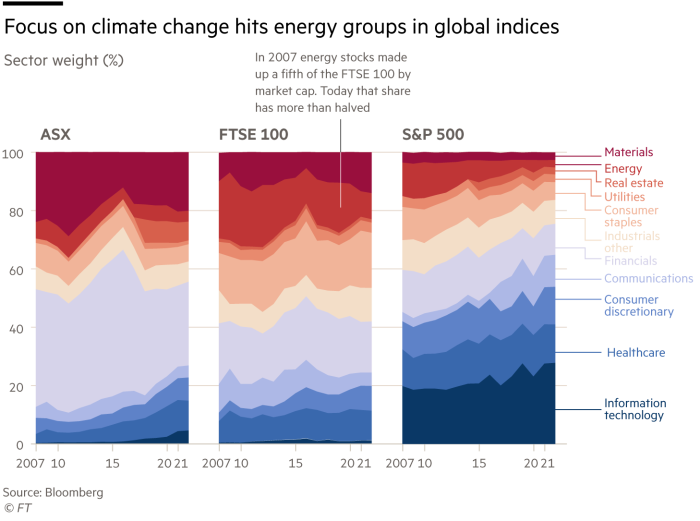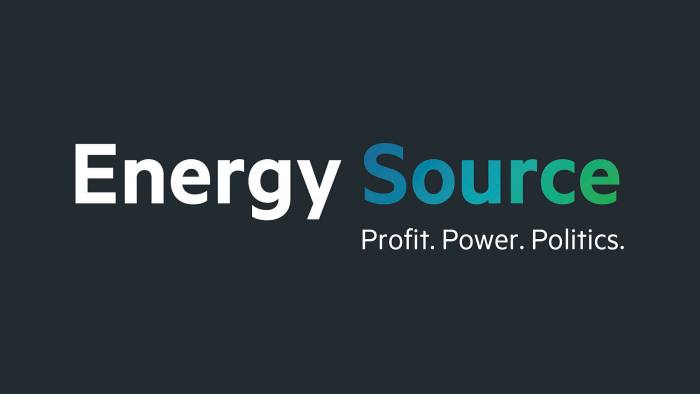[ad_1]
BHP has pulled ahead of Royal Dutch Shell to become the UK’s biggest company by market value, underscoring the contrasting fortunes of the mining and oil industries during the pandemic.
The miner’s stock price has surged 120 per cent from its March lows, driven by booming Chinese demand for the company’s most important commodity, iron ore. Its shares are up 25 per cent from a year ago and BHP’s market capitalisation now stands at £120bn.
By contrast, Shell’s shares have rallied just 41 per cent over the same period and still languish 33 per cent below where they were a year ago as the company struggles to convince investors it can make the shift towards low-carbon energy.
The oil major, which recently reported its lowest earnings in 15 years, is at present valued at £102bn and is the third-biggest company in the blue-chip index just behind Unilever.
However, because of its dual-listed structure — comprising two legal entities, BHP Ltd listed in Sydney and BHP Plc listed in London — only 42 per cent of BHP’s total share count is listed in the UK so the Anglo-Australian miner does not have the biggest weighting in the FTSE 100.

That crown is held by Anglo-Dutch consumer goods company Unilever, which recently completed a unification of its shares.
When it reports its half-year results next week BHP, which has kept all its mines running throughout the pandemic, is expected to report underlying attributable profit of $6.3bn for the six months to December. JPMorgan expects it to achieve a $15bn profit for its full year to the end of June.
The price of iron ore, the key ingredient needed to make steel, has doubled in the past year to almost $165 a tonne — and BHP is set to produce 245m tonnes in its current fiscal year at a cost of just $13 to $14 a tonne.
“I think it is pretty hard to fault BHP now,†said Ben Cleary, a partner at Tribeca Investment Partners, a boutique hedge fund with $3bn under management. “They have got a well-defined dividend policy and are giving investors great capital returns.â€

BHP pays out a minimum of 50 per cent of underlying attributable profit at every reporting period as a dividend.
The company has come a long way in the four years since it was the target of a campaign by activist investor Elliott Advisors. At the time, BHP was far from the top of the corporate pile, with a market capitalisation of about £75bn while Shell was valued at more than £180bn, according to data from Refinitiv.
Elliott accused the miner of failing to deliver “optimal†value for shareholders by sticking with its complex corporate structure that dates back to the 2001 merger of Australia’s BHP and London-listed Billiton.
Tribeca also entered the fray, calling on the company to sell its lossmaking US shale business and overhaul its board, which it claimed had destroyed $30bn in shareholder capital.

“If you look at what has happened to iron ore and oil prices over the past four years, that explains a lot about the performance of BHP and Shell,†said George Cheveley, portfolio manager at Ninety One, an asset manager.
However, some credit has to go to the company, according to Cleary. BHP is now a much simpler company to follow and model, focused on just four commodities — copper, iron ore, coking coal and offshore oil.Â
“They have done a good job since it took some heat from us and other shareholders,†he said. “They sold the US onshore oil business and now have a much more transparent approach to new projects.â€
BHP has also benefited from renewed investor interest in miners and commodities, fanned by expectations of a boom in green infrastructure spending by governments. Elliott remains a big shareholder, owning more than 5 per cent of BHP’s London shares.

Under the leadership of Mike Henry since January 2020, BHP is looking to withdraw from thermal coal, which is burnt in power stations to generate electricity, and expand in future-facing metals such as copper and nickel.
The company will this year decide whether to push ahead with a $5.5bn Canadian potash project that investors believe could eventually supplant oil and gas as the fourth leg of BHP’s business.
“From the late 2020s, potash production could start to replace offshore oil earnings over timeâ€,†said Ninety One’s Cheveley. In recent years, petroleum has generated about 15 per of BHP’s earnings before interest, tax, depreciation and amortisation.
Twice weekly newsletter

Energy is the world’s indispensable business and Energy Source is its newsletter. Every Tuesday and Thursday, direct to your inbox, Energy Source brings you essential news, forward-thinking analysis and insider intelligence. Sign up here
But the company’s climb to the top of the UK corporate leaderboard has coincided with a fresh debate about BHP’s dual-listed structure and whether the company should be unified in Australia, where investors have special tax perks called franking credits.
The catalyst has been BHP’s decision to effectively give up on the possibility of realising tax losses in its coal business. These had previously been seen as a barrier to a unification.
In a recent report, analysts at BofA said ending the dual listing could “close†the 18 per cent gap between the Australian and UK shares.
For that to happen, it would also need the backing of 75 per cent of investors in both entities present or voting by proxy at a special meeting.
[ad_2]
Source link





